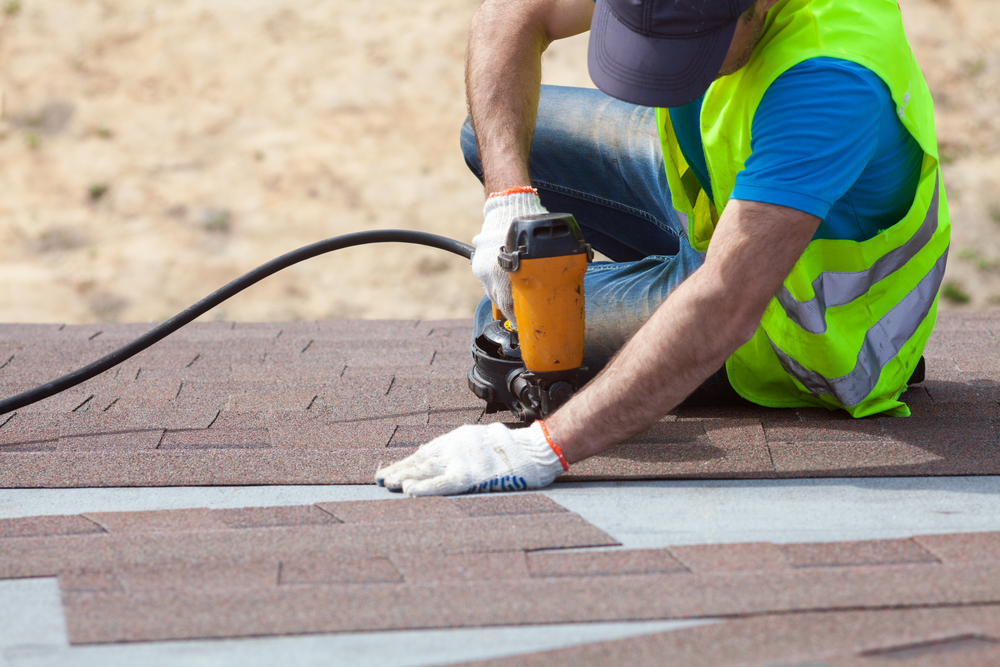Nail Gun Safety: What You Need to Know

In the past, carpenters and construction workers most likely experienced swollen extremities that came with accidentally hitting a thumb with the hammer. While this was certainly not comfortable, the “damage” was usually fairly limited and would cure by itself within a few days.
Today, however, the vast majority of builders, carpenters, and construction workers rely on nail guns to improve the speed and efficiency of their work.
A nail gun is a common tool that is used to drive nails into wood, concrete, or materials. Nail guns are either operated by compressed air (pneumatic), electromagnetism, highly flammable gases such as butane or propane, or, for powder-actuated tools, a small explosive charge.
Though nail gun tools do have safety mechanisms, their users are essentially operating a tool that can cause serious puncture wounds, and even death.
In this overview, we look at some of the statistics related to nail gun hazards. We then offer a few suggestions for how companies can use a nail gun risk assessment in order to develop nail gun safety protocols and policies that help to reduce or eliminate workplace injuries and accidents.
Nail Gun Hazards
According to the United States Center for Disease Control (CDC), “nail guns are a leading cause of injury among residential carpenters and responsible for an estimated 37,000 emergency room visits each year, of which 60 percent are occupationally-related. Puncture wounds to the hands and fingers are most common, but more serious injuries and deaths occur using nail guns.”
Similarly, the Occupational Safety and Health Administration (OSHA) finds that “nail gun injuries are surprisingly common, with 2 out of 5 residential carpenter apprentices experiencing a nail gun injury over a four-year period.”
Nail gun injuries can occur in a number of different ways, including:
- Unintended nail discharge by activating the contact trigger
- Accidental penetration through a piece of material shorter than the nail length
- Ricocheting nails from striking a hard surface or metal feature contacting the body
- Puncture wounds due to awkward nailing position (common with roofing)
- Bypassing safety mechanisms in order to speed up the building process
- Over time, developing musculoskeletal disorders from continuous holding of heavy nail guns
How to Establish Nail Gun Safety Protocols For Your Team
In order to avoid nail gun injuries and accidents, employers should mandate rigorous and in-depth training in proper techniques and procedures for all workers who will be using a nail gun. Before ever using a nail gun on a jobsite, every employee must understand how to activate safety mechanisms and identify where the triggers are located.
Additionally, OSHA recommends six practical steps to implement as part of a holistic and comprehensive nail gun safety protocol. These steps are:
- Only provide and use full-sequential trigger nail guns.
This is the safest type of nail gun because the nail will only “fire” when the controls are activated in a certain order. The safety contact tip must be pushed into the workpiece, then the user squeezes the trigger to discharge a nail. This sequence reduces the risk of accidental firing. - Provide adequate training and apprenticeship.
The training should occur before an employee ever uses a nail gun on a work site. - Establish nail gun work procedures.
These procedures should include who is allowed to use the nail gun, under what circumstances, and proper use of the sequential mechanisms. - Provide Personal Protective Equipment (PPE).
For nail gun use, this includes gloves, eye protection, and helmets. - Encourage reporting and discussion of injuries and close calls.
Unfortunately, many minor nail gun injuries go unreported. By reporting even minor puncture wounds, employees can understand the potential dangers and reduce risky behavior. - Provide access to First Aid and medical treatment, like onsite injury triage with TeleHealth.
All employers should have a full first aid kit on the worksite in the event of nail gun injuries. In addition to protocols for notifying emergency services, the most prepared teams will have access to immediate assistance and injury triage from licensed medical professionals via TeleHealth kiosks.
Prevent Nail Gun Injuries With Work-Fit
Another way you can reduce the frequency of nail gun-related injuries is to hire a third-party contractor that can help your company specify the best protocols for nail gun safety. Work-Fit is a leading onsite injury prevention and management company for your workforce.
Our workplace injury prevention and injury management programs are great resources that will reduce or even eliminate costly nail gun-related accidents and injuries on your team. Contact Work-Fit today to take the next step in protecting your workers and your bottom line.